Project: Ethical and Non-Verbal Communication in Australian Workplace
VerifiedAdded on 2022/11/28
|9
|757
|345
Project
AI Summary
This project involves creating a short MP4 video presentation for staff at the "Division of Enabling Communication," an agency assisting new migrants in understanding Australian culture. The presentation focuses on the importance of non-verbal communication with the Australian community, providing specific examples such as the use of signs, body language, facial expressions, and maintaining eye contact, along with the use of postures and gestures to show respect. The project also covers ethical communication within the workplace, emphasizing the importance of clear, accurate information exchange, ethical codes of conduct, and building trustworthy relationships with colleagues and clients while adhering to Australian cultural values and human rights. The project requires at least six references, including one from a book and an image from the web.
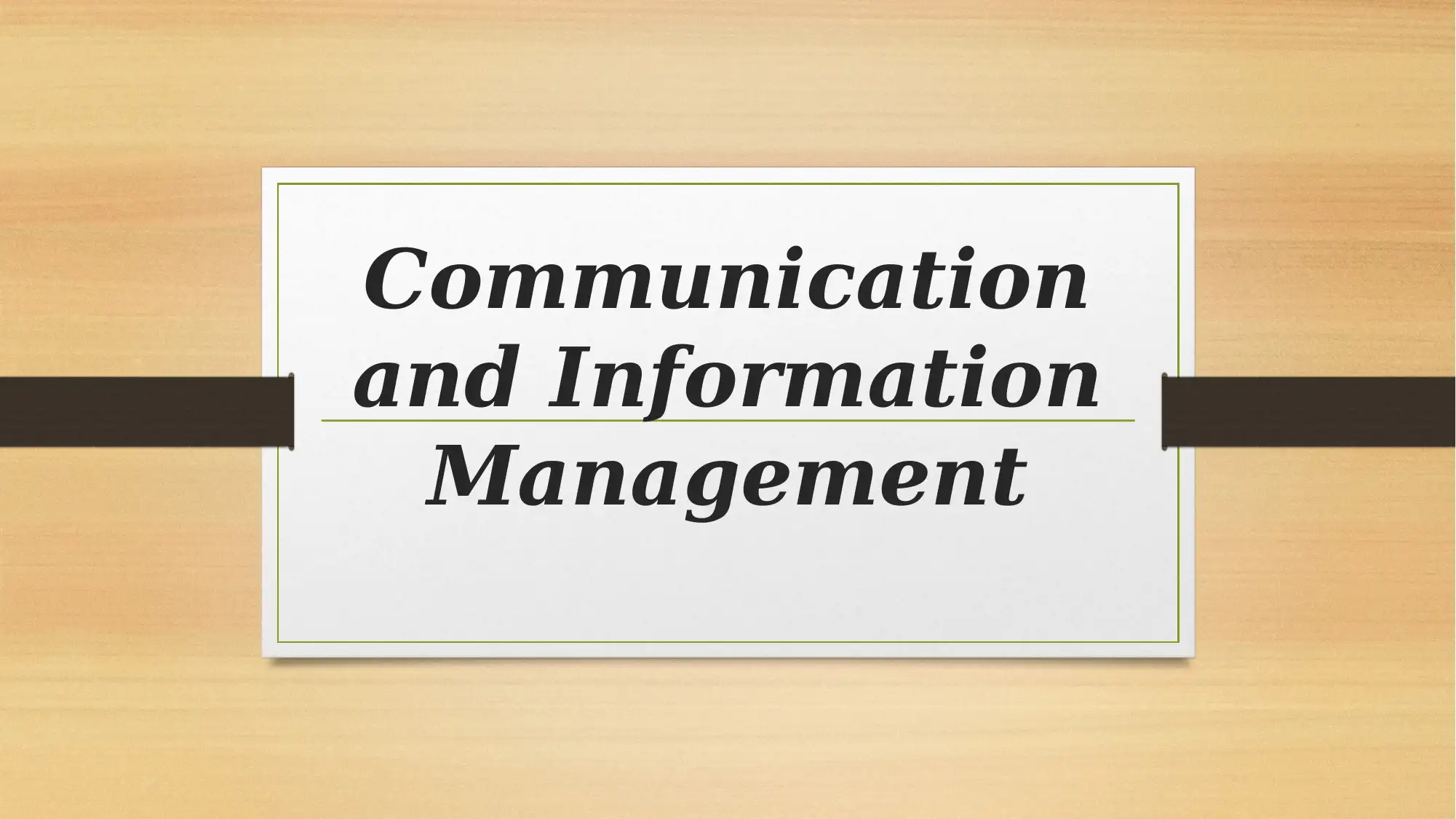
Communication
and Information
Management
and Information
Management
Paraphrase This Document
Need a fresh take? Get an instant paraphrase of this document with our AI Paraphraser
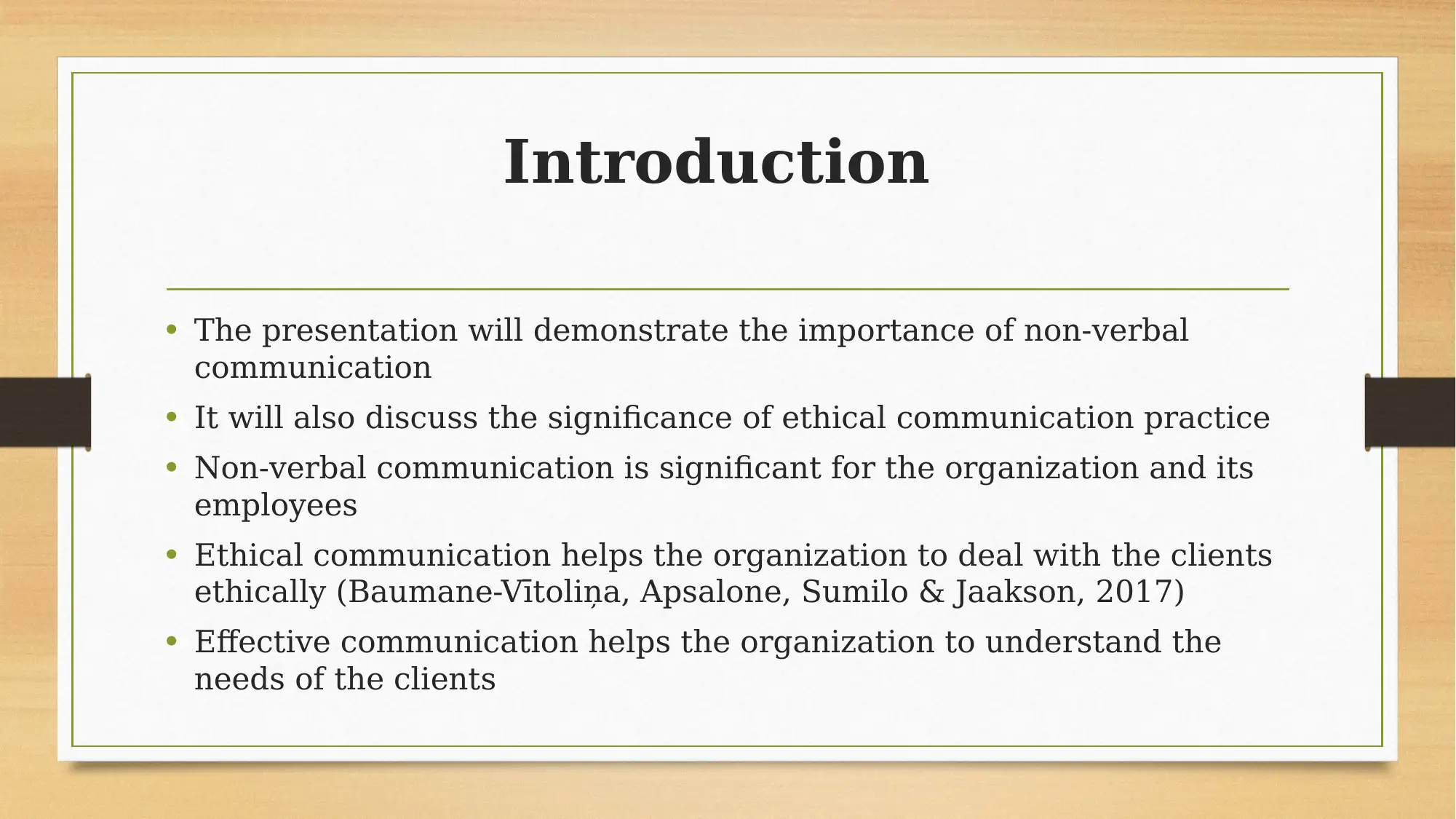
Introduction
• The presentation will demonstrate the importance of non-verbal
communication
• It will also discuss the significance of ethical communication practice
• Non-verbal communication is significant for the organization and its
employees
• Ethical communication helps the organization to deal with the clients
ethically (Baumane-Vītoliņa, Apsalone, Sumilo & Jaakson, 2017)
• Effective communication helps the organization to understand the
needs of the clients
• The presentation will demonstrate the importance of non-verbal
communication
• It will also discuss the significance of ethical communication practice
• Non-verbal communication is significant for the organization and its
employees
• Ethical communication helps the organization to deal with the clients
ethically (Baumane-Vītoliņa, Apsalone, Sumilo & Jaakson, 2017)
• Effective communication helps the organization to understand the
needs of the clients
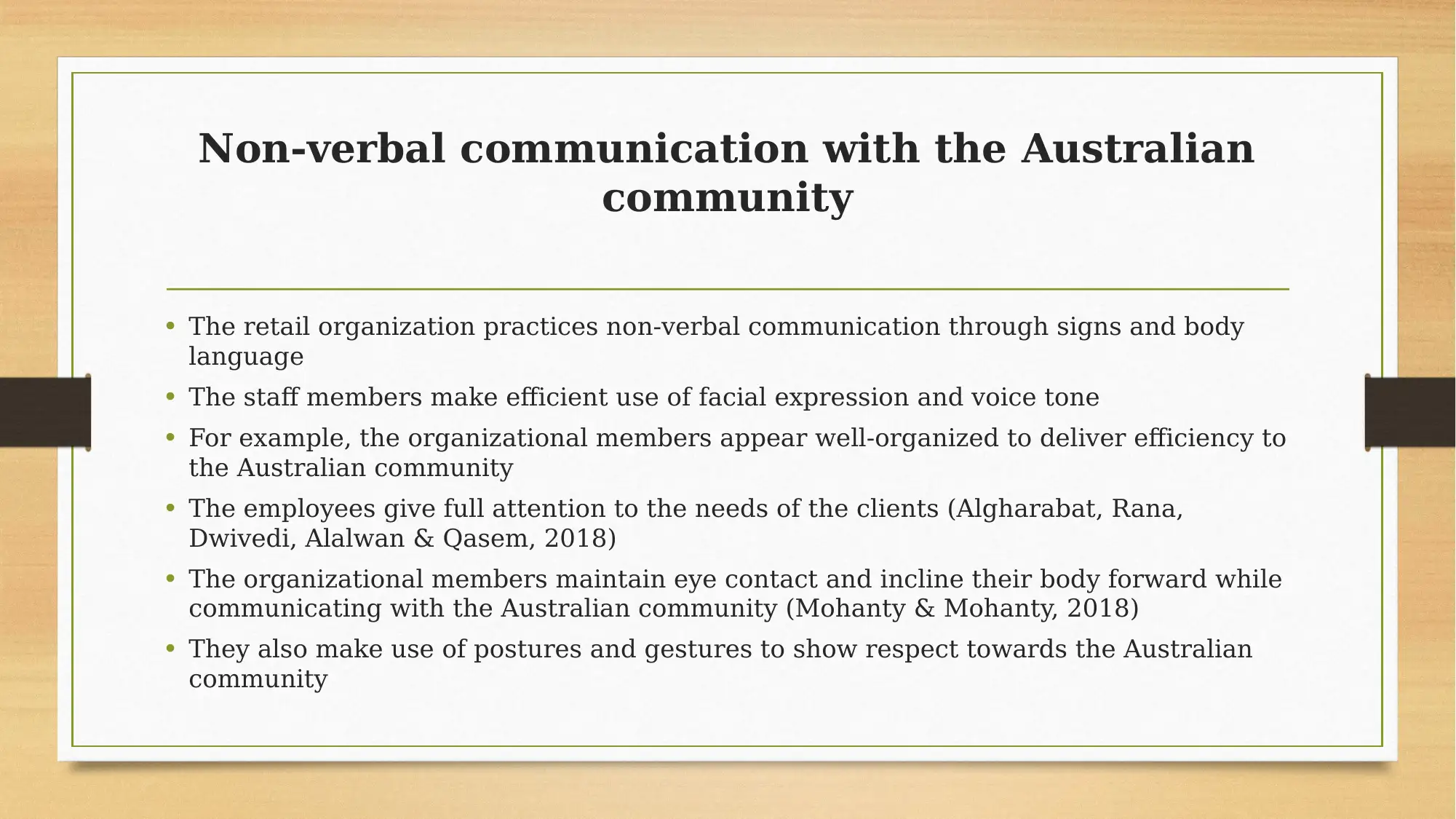
Non-verbal communication with the Australian
community
• The retail organization practices non-verbal communication through signs and body
language
• The staff members make efficient use of facial expression and voice tone
• For example, the organizational members appear well-organized to deliver efficiency to
the Australian community
• The employees give full attention to the needs of the clients (Algharabat, Rana,
Dwivedi, Alalwan & Qasem, 2018)
• The organizational members maintain eye contact and incline their body forward while
communicating with the Australian community (Mohanty & Mohanty, 2018)
• They also make use of postures and gestures to show respect towards the Australian
community
community
• The retail organization practices non-verbal communication through signs and body
language
• The staff members make efficient use of facial expression and voice tone
• For example, the organizational members appear well-organized to deliver efficiency to
the Australian community
• The employees give full attention to the needs of the clients (Algharabat, Rana,
Dwivedi, Alalwan & Qasem, 2018)
• The organizational members maintain eye contact and incline their body forward while
communicating with the Australian community (Mohanty & Mohanty, 2018)
• They also make use of postures and gestures to show respect towards the Australian
community
⊘ This is a preview!⊘
Do you want full access?
Subscribe today to unlock all pages.

Trusted by 1+ million students worldwide
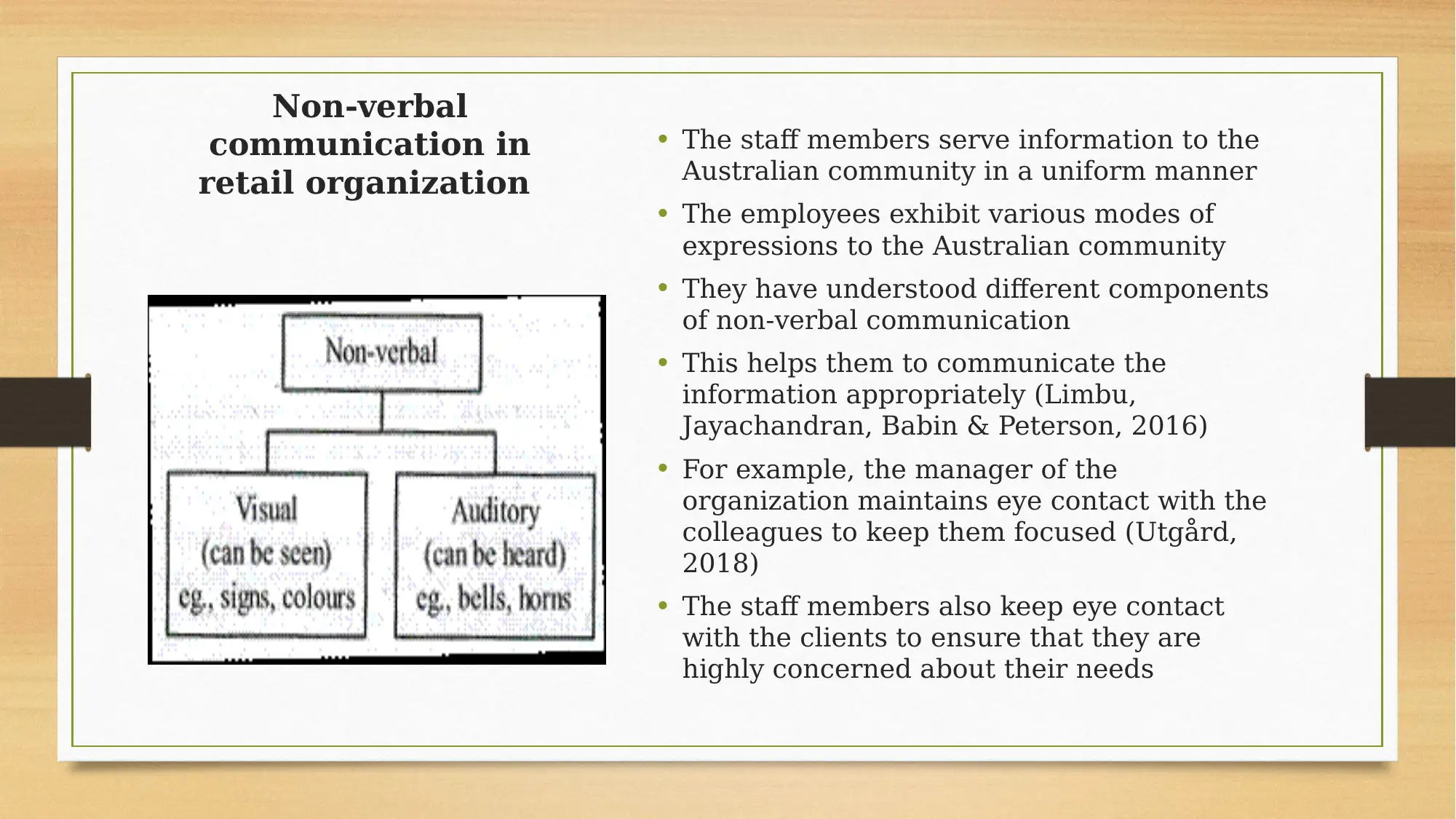
Non-verbal
communication in
retail organization
• The staff members serve information to the
Australian community in a uniform manner
• The employees exhibit various modes of
expressions to the Australian community
• They have understood different components
of non-verbal communication
• This helps them to communicate the
information appropriately (Limbu,
Jayachandran, Babin & Peterson, 2016)
• For example, the manager of the
organization maintains eye contact with the
colleagues to keep them focused (Utgård,
2018)
• The staff members also keep eye contact
with the clients to ensure that they are
highly concerned about their needs
communication in
retail organization
• The staff members serve information to the
Australian community in a uniform manner
• The employees exhibit various modes of
expressions to the Australian community
• They have understood different components
of non-verbal communication
• This helps them to communicate the
information appropriately (Limbu,
Jayachandran, Babin & Peterson, 2016)
• For example, the manager of the
organization maintains eye contact with the
colleagues to keep them focused (Utgård,
2018)
• The staff members also keep eye contact
with the clients to ensure that they are
highly concerned about their needs
Paraphrase This Document
Need a fresh take? Get an instant paraphrase of this document with our AI Paraphraser
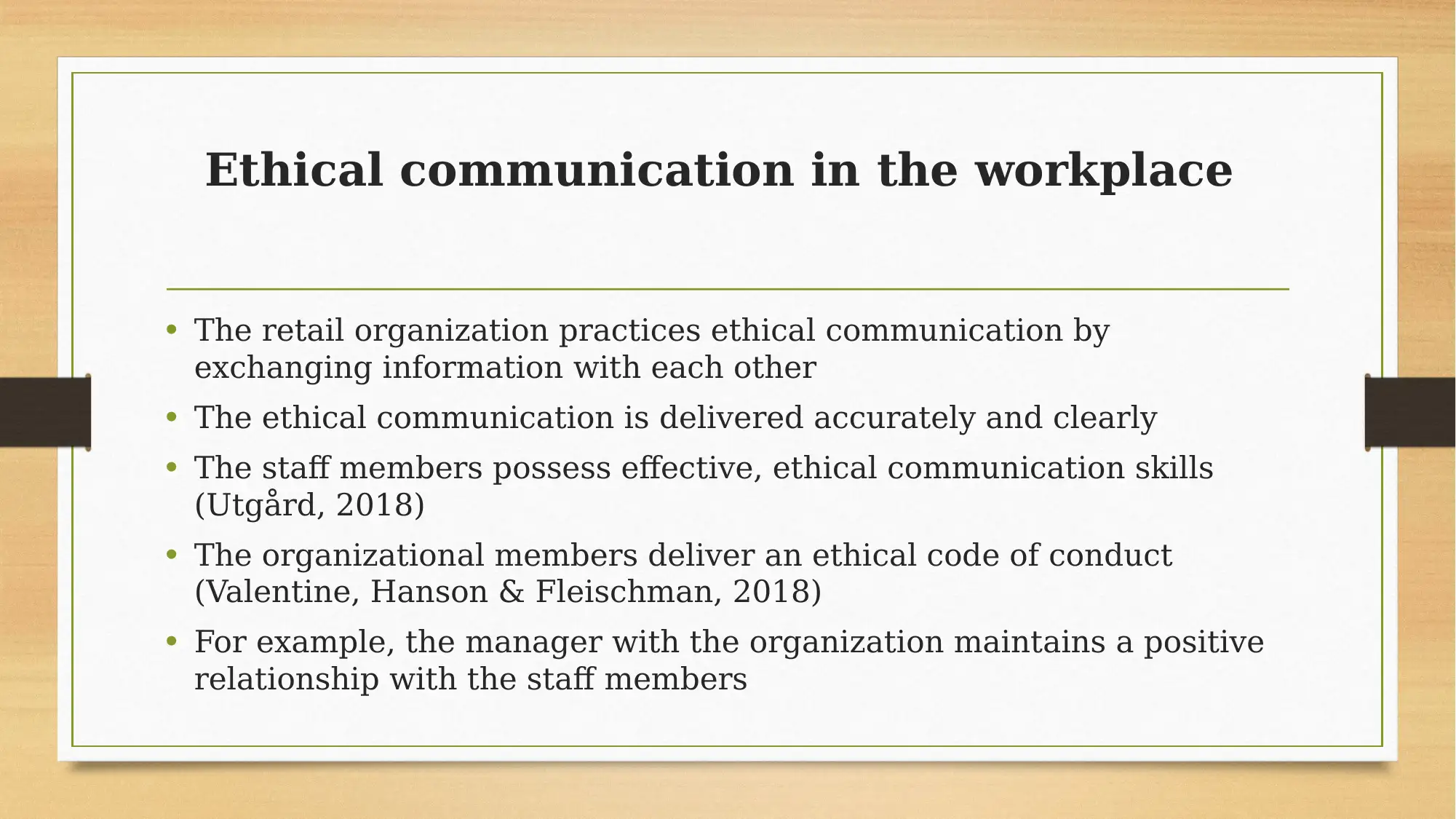
Ethical communication in the workplace
• The retail organization practices ethical communication by
exchanging information with each other
• The ethical communication is delivered accurately and clearly
• The staff members possess effective, ethical communication skills
(Utgård, 2018)
• The organizational members deliver an ethical code of conduct
(Valentine, Hanson & Fleischman, 2018)
• For example, the manager with the organization maintains a positive
relationship with the staff members
• The retail organization practices ethical communication by
exchanging information with each other
• The ethical communication is delivered accurately and clearly
• The staff members possess effective, ethical communication skills
(Utgård, 2018)
• The organizational members deliver an ethical code of conduct
(Valentine, Hanson & Fleischman, 2018)
• For example, the manager with the organization maintains a positive
relationship with the staff members
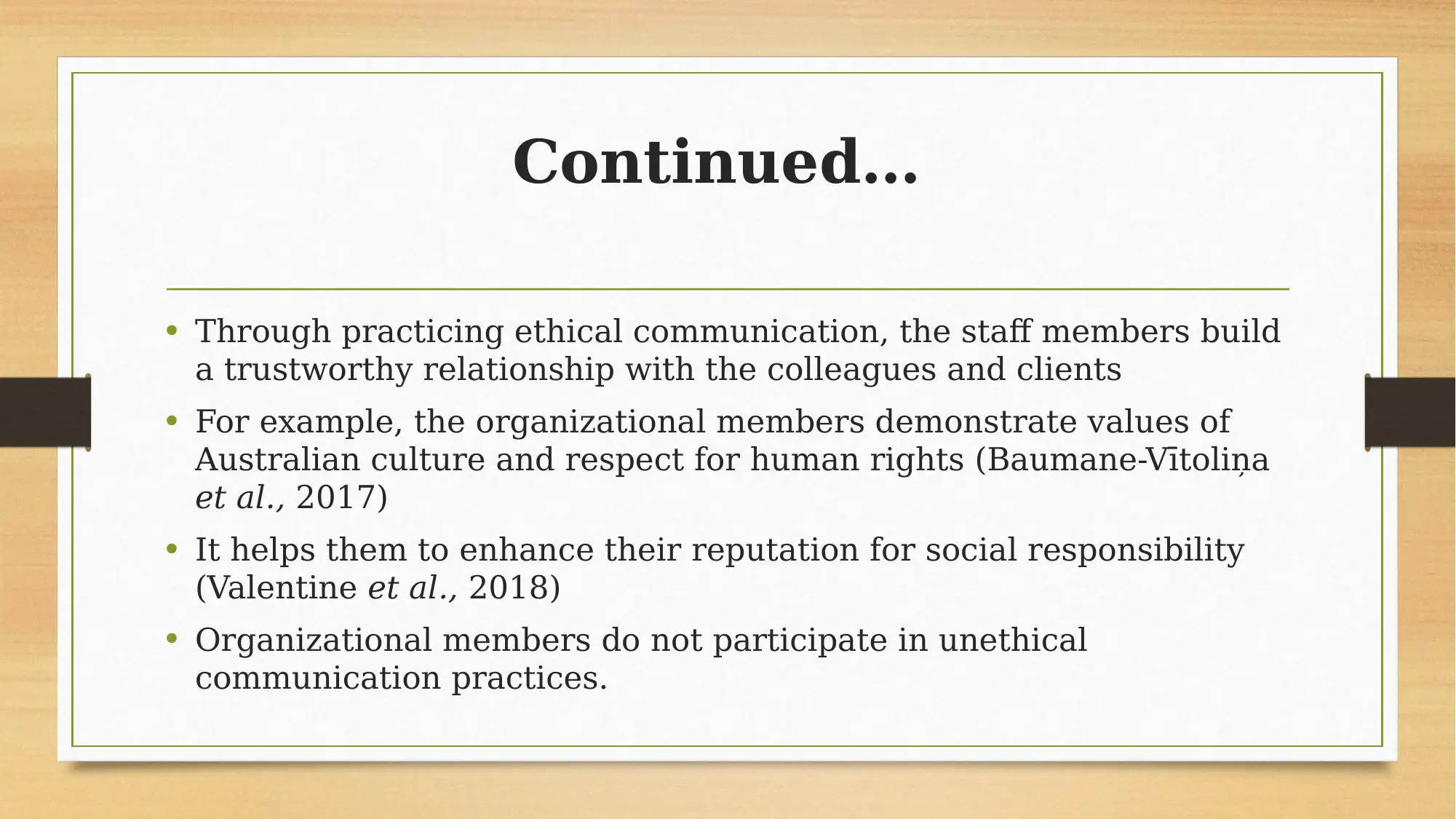
Continued…
• Through practicing ethical communication, the staff members build
a trustworthy relationship with the colleagues and clients
• For example, the organizational members demonstrate values of
Australian culture and respect for human rights (Baumane-Vītoliņa
et al., 2017)
• It helps them to enhance their reputation for social responsibility
(Valentine et al., 2018)
• Organizational members do not participate in unethical
communication practices.
• Through practicing ethical communication, the staff members build
a trustworthy relationship with the colleagues and clients
• For example, the organizational members demonstrate values of
Australian culture and respect for human rights (Baumane-Vītoliņa
et al., 2017)
• It helps them to enhance their reputation for social responsibility
(Valentine et al., 2018)
• Organizational members do not participate in unethical
communication practices.
⊘ This is a preview!⊘
Do you want full access?
Subscribe today to unlock all pages.

Trusted by 1+ million students worldwide
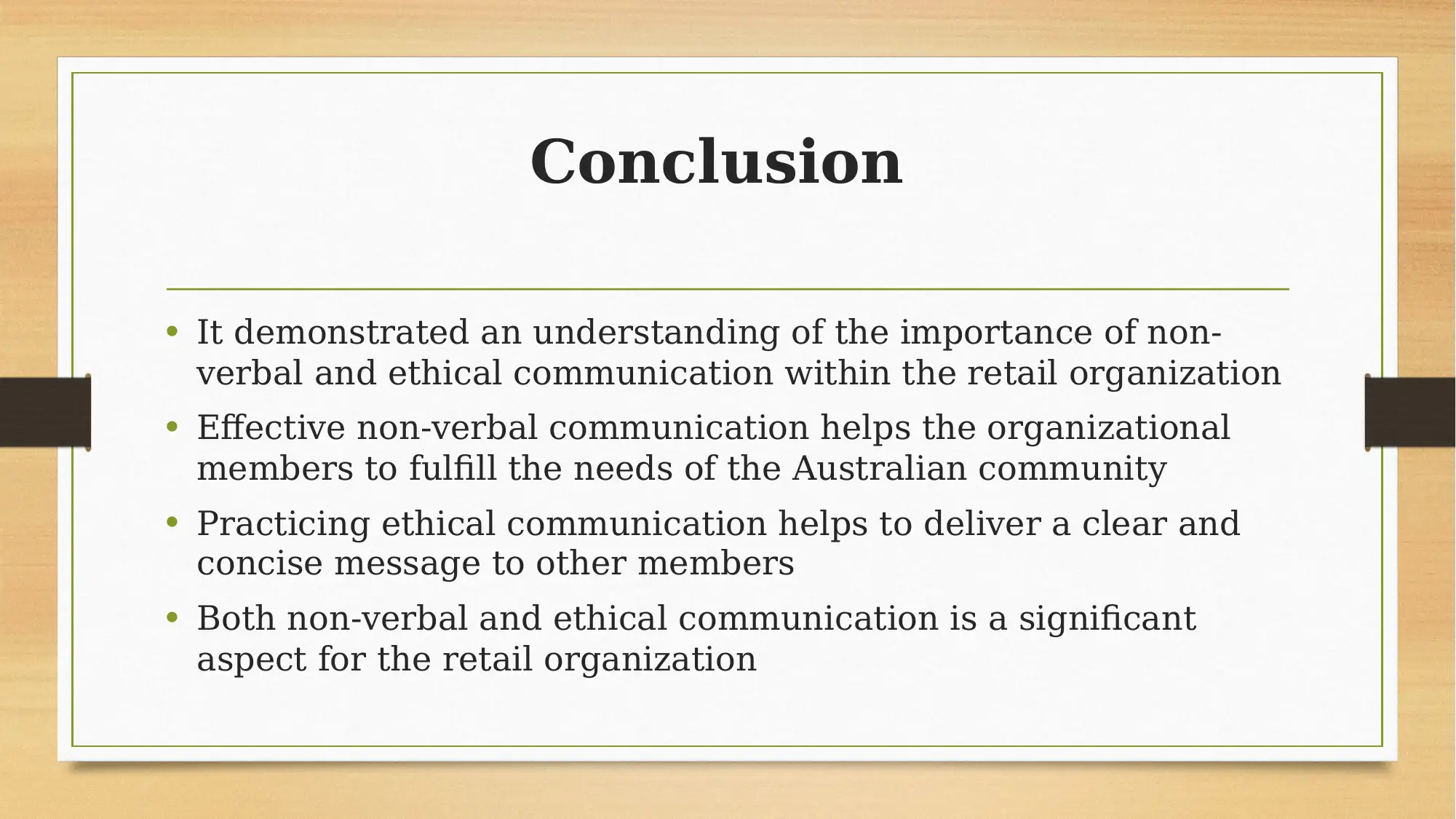
Conclusion
• It demonstrated an understanding of the importance of non-
verbal and ethical communication within the retail organization
• Effective non-verbal communication helps the organizational
members to fulfill the needs of the Australian community
• Practicing ethical communication helps to deliver a clear and
concise message to other members
• Both non-verbal and ethical communication is a significant
aspect for the retail organization
• It demonstrated an understanding of the importance of non-
verbal and ethical communication within the retail organization
• Effective non-verbal communication helps the organizational
members to fulfill the needs of the Australian community
• Practicing ethical communication helps to deliver a clear and
concise message to other members
• Both non-verbal and ethical communication is a significant
aspect for the retail organization
Paraphrase This Document
Need a fresh take? Get an instant paraphrase of this document with our AI Paraphraser
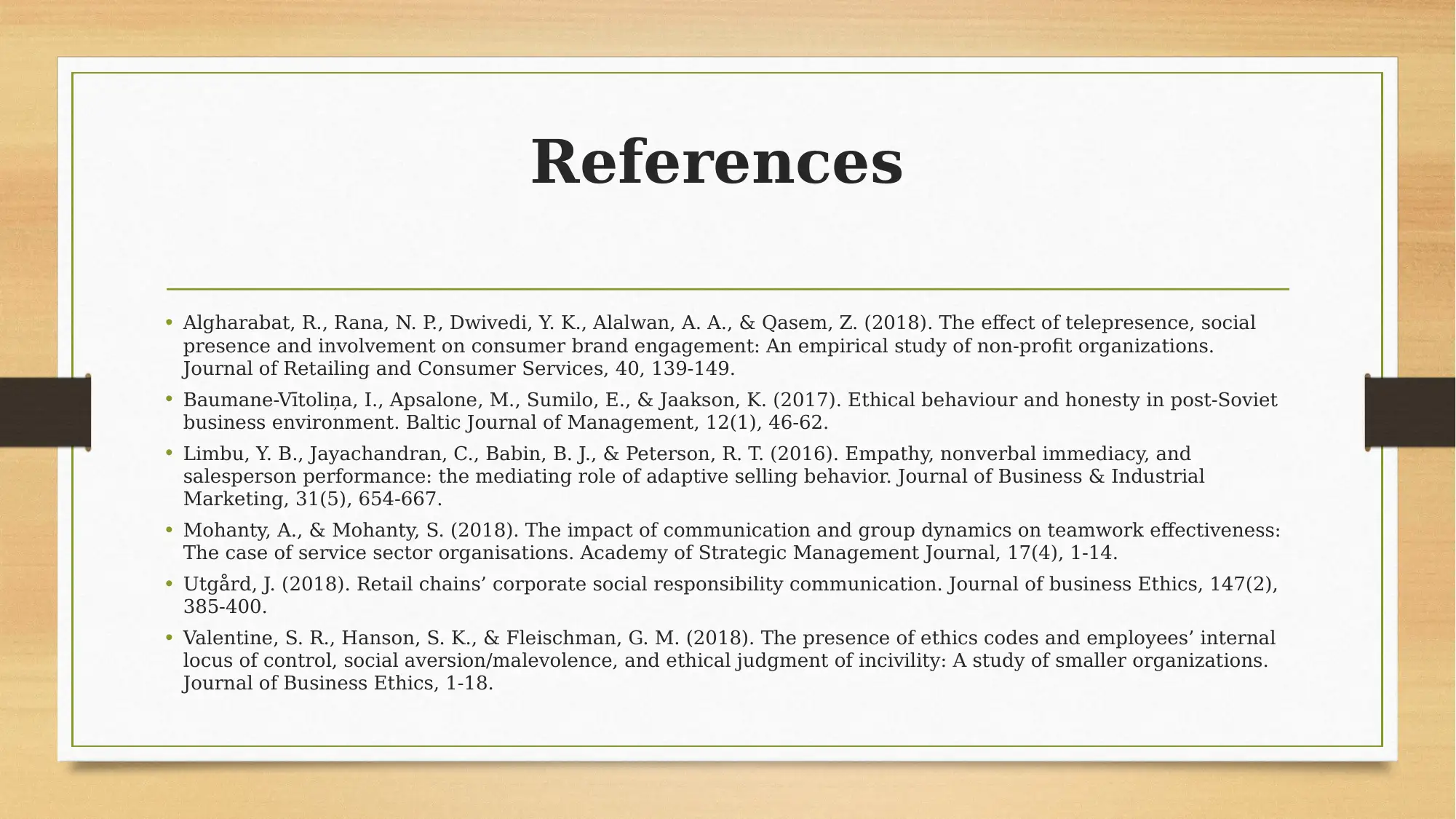
References
• Algharabat, R., Rana, N. P., Dwivedi, Y. K., Alalwan, A. A., & Qasem, Z. (2018). The effect of telepresence, social
presence and involvement on consumer brand engagement: An empirical study of non-profit organizations.
Journal of Retailing and Consumer Services, 40, 139-149.
• Baumane-Vītoliņa, I., Apsalone, M., Sumilo, E., & Jaakson, K. (2017). Ethical behaviour and honesty in post-Soviet
business environment. Baltic Journal of Management, 12(1), 46-62.
• Limbu, Y. B., Jayachandran, C., Babin, B. J., & Peterson, R. T. (2016). Empathy, nonverbal immediacy, and
salesperson performance: the mediating role of adaptive selling behavior. Journal of Business & Industrial
Marketing, 31(5), 654-667.
• Mohanty, A., & Mohanty, S. (2018). The impact of communication and group dynamics on teamwork effectiveness:
The case of service sector organisations. Academy of Strategic Management Journal, 17(4), 1-14.
• Utgård, J. (2018). Retail chains’ corporate social responsibility communication. Journal of business Ethics, 147(2),
385-400.
• Valentine, S. R., Hanson, S. K., & Fleischman, G. M. (2018). The presence of ethics codes and employees’ internal
locus of control, social aversion/malevolence, and ethical judgment of incivility: A study of smaller organizations.
Journal of Business Ethics, 1-18.
• Algharabat, R., Rana, N. P., Dwivedi, Y. K., Alalwan, A. A., & Qasem, Z. (2018). The effect of telepresence, social
presence and involvement on consumer brand engagement: An empirical study of non-profit organizations.
Journal of Retailing and Consumer Services, 40, 139-149.
• Baumane-Vītoliņa, I., Apsalone, M., Sumilo, E., & Jaakson, K. (2017). Ethical behaviour and honesty in post-Soviet
business environment. Baltic Journal of Management, 12(1), 46-62.
• Limbu, Y. B., Jayachandran, C., Babin, B. J., & Peterson, R. T. (2016). Empathy, nonverbal immediacy, and
salesperson performance: the mediating role of adaptive selling behavior. Journal of Business & Industrial
Marketing, 31(5), 654-667.
• Mohanty, A., & Mohanty, S. (2018). The impact of communication and group dynamics on teamwork effectiveness:
The case of service sector organisations. Academy of Strategic Management Journal, 17(4), 1-14.
• Utgård, J. (2018). Retail chains’ corporate social responsibility communication. Journal of business Ethics, 147(2),
385-400.
• Valentine, S. R., Hanson, S. K., & Fleischman, G. M. (2018). The presence of ethics codes and employees’ internal
locus of control, social aversion/malevolence, and ethical judgment of incivility: A study of smaller organizations.
Journal of Business Ethics, 1-18.

⊘ This is a preview!⊘
Do you want full access?
Subscribe today to unlock all pages.

Trusted by 1+ million students worldwide
1 out of 9
Related Documents
Your All-in-One AI-Powered Toolkit for Academic Success.
+13062052269
info@desklib.com
Available 24*7 on WhatsApp / Email
![[object Object]](/_next/static/media/star-bottom.7253800d.svg)
Unlock your academic potential
Copyright © 2020–2025 A2Z Services. All Rights Reserved. Developed and managed by ZUCOL.


